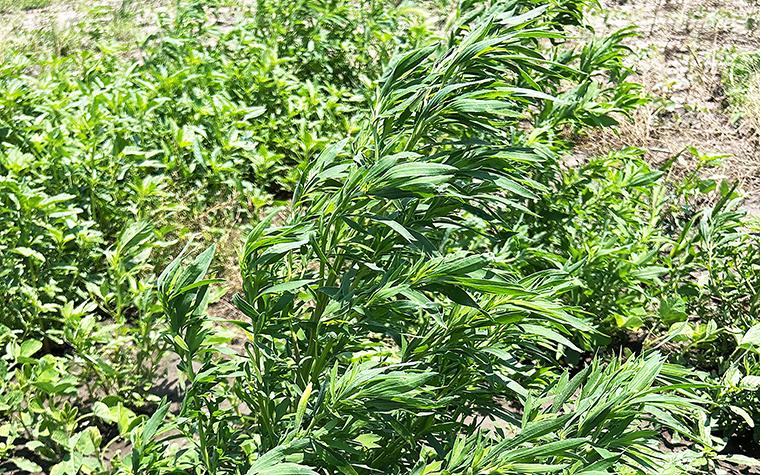ST. JOSEPH, Mo. – Kochia, a highly competitive weed that can reduce yields by as much as 70%, has been found in northwestern Missouri soybean fields, says Wayne Flanary, University of Missouri Extension field specialist in agronomy.
Kochia is not new to Missouri, according to Flora of Missouri, a project of the Missouri Botanical Garden and the Missouri Department of Conservation. However, this may be the first report of kochia showing up in cropland, says MU Extension weed scientist Kevin Bradley.
“I have never gotten calls or complaints about this species in corn or soybean fields,” says Bradley. “And I spend time actively looking for these kinds of situations and have never seen it in a Missouri corn or soybean field before.”
Flanary says kochia likely made its way to agricultural land via flooding of the Missouri River and its tributaries. Flanary found large, scattered plants in Atchison County soybean fields.
Prolific early emerger
Kochia threatens yields, grows rapidly and aggressively outcompetes crops for water, nutrients and sunlight. It tolerates drought, produces up to 30,000 seeds per plant and germinates quickly – within two or three hours with the right conditions. It emerges as early as February in Kansas, and chemical control is difficult.
May be herbicide-resistant
The biggest concern is that kochia may already be herbicide-resistant. “Growers should keep in mind that they may already be dealing with a population that is resistant to glyphosate or perhaps some other herbicide,” Bradley says.
In Kansas, Nebraska and the Dakotas, kochia is a “driver weed,” influencing or driving weed management decisions in farming operations, Bradley says. “There are numerous types of herbicide-resistant kochia populations in these states, including populations with resistance to the triazines (group 5 herbicides), to glyphosate, and even some populations with resistance to dicamba,” he says.
“As far as control, we don’t really know what to expect in this situation with these populations in northwest Missouri because they could have been transported from other states through flooding of the river. Also, at the time they were discovered, they were already pretty large.” Bradley suggested spot spraying and hand roguing the scattered plants that were found in the Atchison County field.
Identification
Kochia has an alternating arrangement of linear leaves covered with dense hairs. It can grow 6 feet tall and has a spherical shape. Roots can extend 15 feet and measure 21 feet in diameter.
Management
• Crop rotation.
• Early control. Fall cover crops may suppress establishment, and tillage disrupts roots.
• Apply pre-emergence herbicides to soil in late fall or early spring.
• Target small weeds after emergence.
• Prevent seed production by killing before flowering.
Spread
Kochia can spread through the wind. As it matures, the stem can separate from the root, and the plant becomes a tumbleweed that spreads seeds across fields.
More information
- Kochia Management in Soybeans, United Soybean Board.
- MU Weed ID Guide entry on kochia.
If you think you may have kochia in cropland, contact your local MU Extension agronomist or the MU Extension Plant Diagnostic Clinic.
Photo
Kochia
Kochia, a highly competitive weed that can reduce yield by as much as 70%, has been found in northwestern Missouri soybean fields. Photo by Wayne Flanary, MU Extension agronomy specialist.
